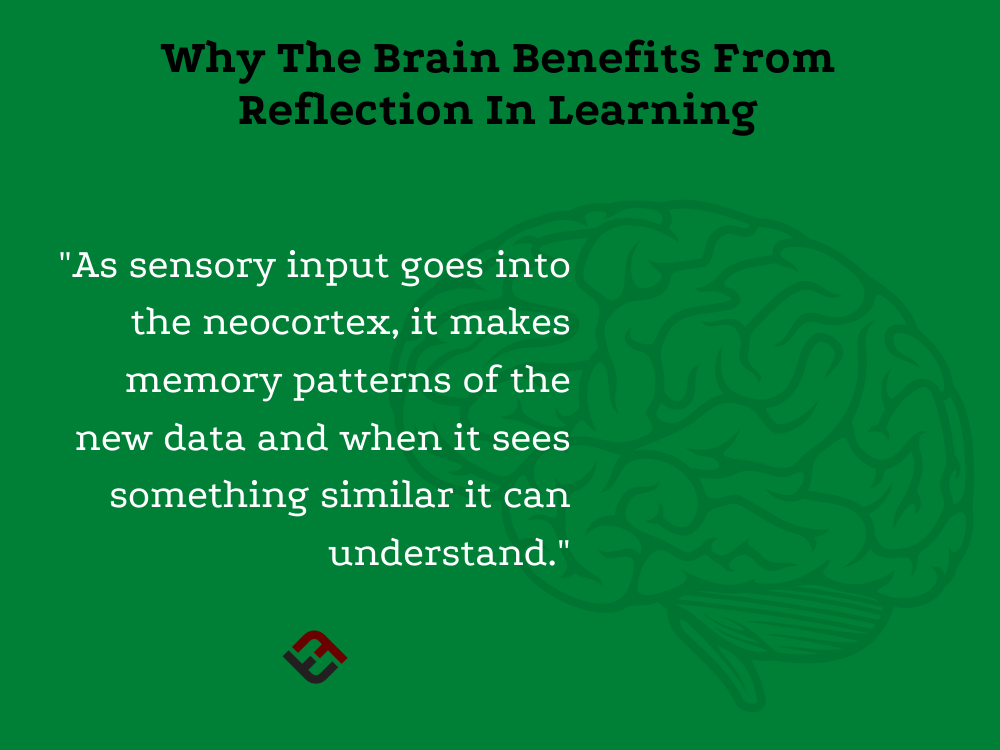How The Brain Benefits From Reflection In Learning
contributed by Judy Willis M.D., M.Ed., radteach.com
Executive function stimulation: include questions in homework and tests that require mathematics communication. In addition to showing the steps used to solve a problem, when students are asked to explain their thinking and why they selected a procedure or what similar mathematics they related to when solving the problem, they are using more executive functions.
This process engages the mental manipulation of metacognition, thought organization, concise consolidation of knowledge, deductive and inductive thinking.
Activities That Reach Executive Function
1. Design a webpage or presentation
2. Design a board game
3. Write a book for a younger student
4. Create a brochure or advertising materials for a specific product or service
5. Make predictions based on an idea or knowledge
6. Connect to another subject or big idea
7. Use apparently disparate information to try to help solve a meaningful problem
8. Create a newsletter or blog that establishes and maintains a position
Mental Manipulation & Executive Function
Processing time, reflection, and metacognition are vital to the learning environment.
Thus, much of the effort put into teaching and studying is wasted because students do not adequately process their experiences, nor are they given time to reflect upon them.
Analysis of videotaped lessons of 8th-grade teachers of math in the US compared to countries that score the top scoring in the Third International Math and Science Study. Those countries “not only assigned their students challenging mathematics problems, but also used active questioning and dialogue to help students see and understand the connections among mathematics concepts as they solved the problems.” Videotapes of US teachers focused on teaching procedures and formulas and telling children when to plug in numbers. The degree to which one understands rests on the connections or relationships and the richness of these relationships.
Understanding a topic provides the foundation for remembering or reconstructing facts or methods. With this definition, understanding is also known as conceptual knowledge; instruction that builds conceptual knowledge helps students’ link old knowledge with new knowledge, and this means providing time for reflection and communication.
Reflection Can Build Confidence
As an example, students conceptually understand the multiplication of two numbers when they have made the connections that two repeated four times is the same amount as four repeated two times. From that good beginning, students will be most likely to be active participants in their learning. When good beginnings are followed by goal-directed, learning, students see their progress.
Students will increasingly associate perseverance and practice with success, they will persevere to achieve these goals. They will ultimately reach the point where they can be guided through their interests and learning strengths into almost any topic of study.
Students’ confidence will build further with their recognition of the strategies they used that brought them success. School again becomes the magical place it was (for most children) in kindergarten, where passions and optimism ran high and learning was a new adventure to be explored with joy.
As sensory input goes into the neocortex it makes memory patterns of the new data and when it sees something similar it can understand, the signals are fed back so we can understand through recognition of similarities to prior knowledge.
Through this relational memory, we make predictions based on our stored knowledge and neuronal patterns and circuits.
Stigler, J. & Hiebert, J. (2004). Improving mathematics teaching. Educational Leadership, 61(5), 12-17; this article is based on and excerpted from content by the author first published in STEM Magazine; image attribution flickr user josekevo

